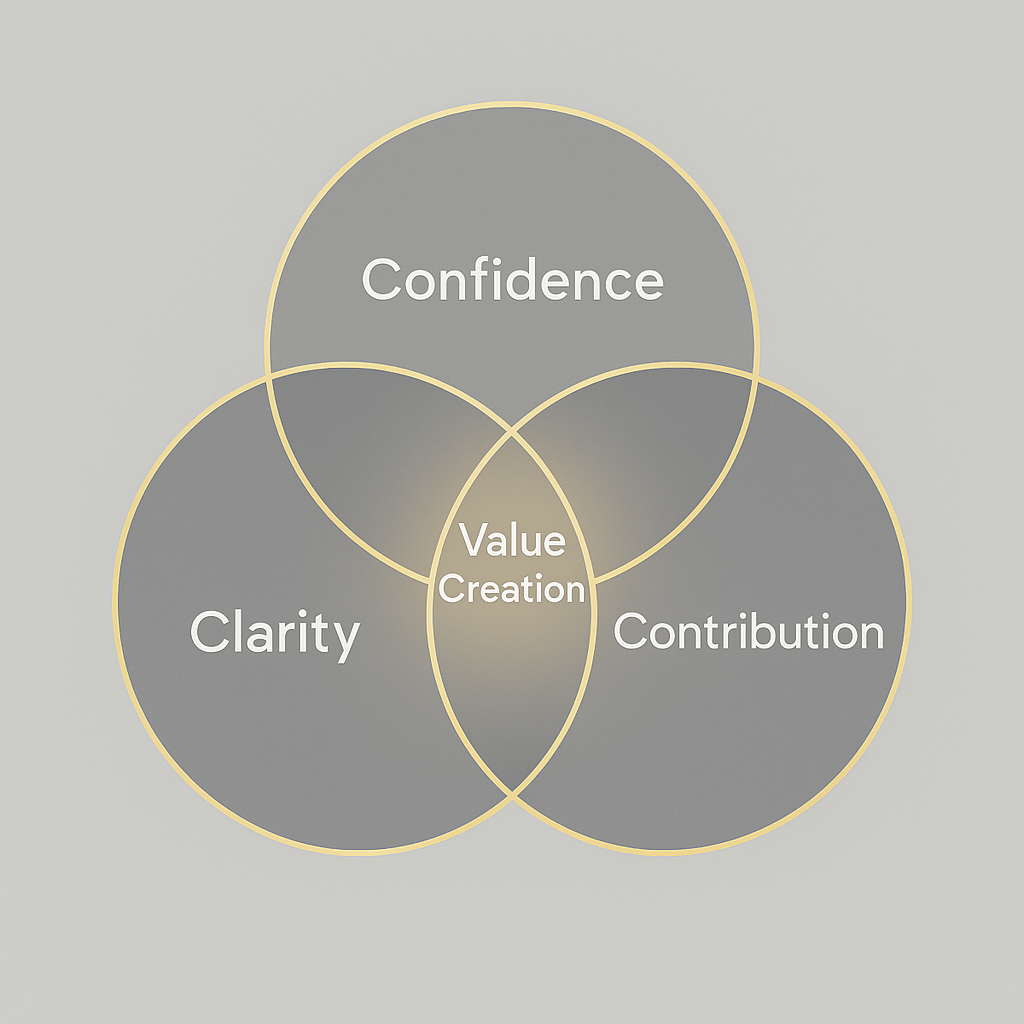Most people think price is math. It's not. It's language — and belief is its grammar.
Every transaction is a short story about faith. You say, "This is worth $100." Someone else says, "I agree." At that moment, the number becomes real — not before.
That's what a dollar truly is: a shared hallucination that everyone treats as solid. And that illusion, repeated billions of times per day, becomes an economy.
The Shared Hallucination
A dollar has no inherent value. It's paper, pixels, or metal — materials worth pennies at most. Yet we treat it as if it contains magic, because in a very real sense, it does.
The magic isn't in the dollar itself. It's in the agreement.
When a painting sells for $10 million, the price doesn't prove its worth — it measures the size of the story around it. When no one buys your offer, it doesn't mean it's worthless. It means the world didn't feel your story yet.
Pro Tip
Your pricing isn't about what you think you're worth. It's about what story you're telling and how many people believe it.
This shared hallucination operates at every level of commerce. From the corner store to Wall Street, from freelance rates to Fortune 500 valuations — all of it rests on collective agreement about what numbers mean.
Value as Synchronization
Every sale is a synchronization event. Two people's inner worlds briefly align on the same frequency of belief. That's why you can't force a sale — only tune it.
Think about the last time you bought something expensive without hesitation. The price felt right, didn't it? Not because you calculated its objective worth, but because something inside you recognized the value immediately.
When your energy, your copy, and your confidence vibrate together, the buyer recognizes it instantly. No persuasion needed. Recognition replaces convincing.
Example: A consultant charges $500/hour and struggles to find clients. Another charges $5,000/day and has a waiting list. The difference isn't skill — it's the frequency of belief they're broadcasting.
The Resonance Factor
Value resonance happens when:
- Your confidence matches your price point
- Your story aligns with market readiness
- Your energy supports your numbers
- Your delivery exceeds expectations
When these elements synchronize, price becomes invisible. The focus shifts from cost to transformation, from expense to investment.
Money as Stored Trust
A dollar is a receipt for past belief. It says, "someone, somewhere, trusted this exchange."
That's why economies don't collapse when machines break — they collapse when trust breaks. Money stops moving not because people lack currency, but because they stop believing in the flow.

Trust is the invisible infrastructure that makes all economic activity possible.
Consider cryptocurrency. Bitcoin has no government backing, no physical form, no traditional authority guaranteeing its value. Yet it commands prices in the tens of thousands because enough people believe in its story.
The same principle applies to your business. Every dollar you earn is someone storing their trust in your ability to deliver value. Every price you set is a declaration of how much trust you believe you can hold.
Building Trust Currency
Trust accumulates through:
- Consistency: Delivering what you promise, when you promise it
- Transparency: Clear communication about what you offer and what you don't
- Competence: Demonstrable skill in your domain
- Care: Genuine concern for client outcomes over transactions
Price as Signal
When you set a price, you cast a signal into the collective mind. You're saying, this is the frequency where belief becomes form.
If the number comes from fear, it repels. If it comes from truth, it attracts. That's the difference between a push price and a pull price — one asks to be believed, the other reveals belief already present.
Pro Tip
Fear-based pricing sounds like: "I hope someone will pay this." Truth-based pricing sounds like: "This is what transformation costs."
Your price communicates more than cost — it broadcasts your relationship with your own value. Underpricing signals uncertainty. Overpricing (relative to delivered value) signals delusion. Right pricing signals alignment.
The Psychology of Price Points
Different price ranges trigger different psychological responses:
- Low prices: Trigger skepticism about quality
- Medium prices: Feel safe but forgettable
- High prices: Command attention and respect (when backed by value)
- Premium prices: Create exclusivity and status
The key is matching your price signal to your market's readiness to receive it.
The Real Currency
A dollar is just a symbol. The real currency is confidence, clarity, and contribution.
The stronger your story, the clearer your worth, the steadier your energy — the more your prices hold their shape. And the more the world starts to orbit around your value instead of questioning it.
Real-world application: Instead of asking "What should I charge?" ask "What transformation am I creating?" The price becomes obvious when the value is clear.
Building Your Value Foundation
Confidence comes from knowing your worth isn't negotiable — it's demonstrable.
Clarity comes from understanding exactly what you deliver and why it matters.
Contribution comes from focusing on client outcomes rather than your own needs.
When these three elements align, pricing becomes natural. You're not selling time or effort — you're offering transformation at a specific investment level.

The three pillars of sustainable value creation in any market.
The Belief Economy
We live in a belief economy disguised as a market economy. Every purchase is a vote of confidence. Every price is a statement of faith. Every transaction is two people agreeing on a shared reality.
Understanding this changes everything about how you approach pricing, selling, and value creation. You're not just moving products or services — you're participating in the collective construction of meaning.
Final Insight
The question isn't "What is a dollar worth?" It's "How much belief can this dollar carry?"
Because in the end, every market is built on magic — the kind we call agreement.
Your role isn't to convince people of your value. It's to become so clear about what you offer that the right people recognize it immediately. When belief aligns with delivery, price becomes irrelevant.
The dollar in your hand isn't just currency — it's crystallized trust, stored belief, and proof that somewhere, someone said yes to a story that mattered.
Make sure your story is worth believing in.




